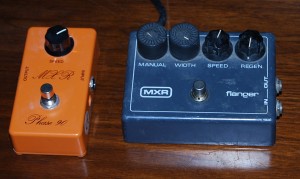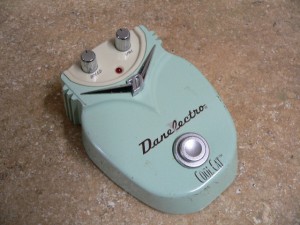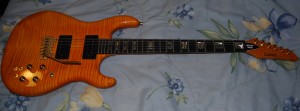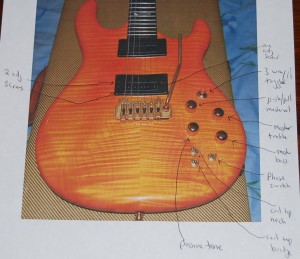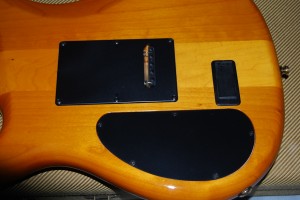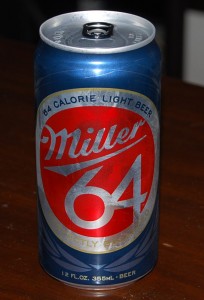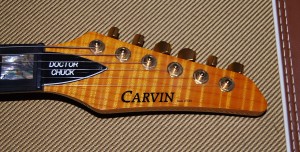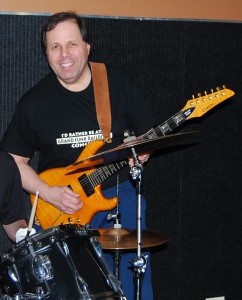Archive for November, 2013
Some of my best friends still insist on going straight in; guitar, guitar cord, amp. While there is a lot to be said for this purist approach I still believe there is plenty of room for subtle improvement in simple ways and so I want to make some suggestions and show you how to add depth to your guitar tone. While I also am not a fan of highly processed over saturated guitar tones and lean more towards purism, I have always loved the way the basic tones of one’s playing can be enhanced through great simple effects like phasing, flanging, and chorus.
Long ago one of the first effects in this regard was the venerable MXR Phase 90. When I first played through one it was one of those “Wow!” moments. All of a sudden my flat sounding chords opened up with a new life of sweet, swirling depth. The Phase 90 soon caught on as a must have device as it opened the door to a lot of worthy competition.
The operation of the unit was very simple and therefore appealing. Preset depth to how far out of phase your signal wil be taken and by one rotating knob the speed of the effect was adjusted. That’s it and that’s all you needed. Simple but effective. At the lowest speed, slipping in and out of phase has a pleasant eeriness as your tone slowly goes from full and sweet, to hollowed out of phase and middy. At the other end of the spectrum, full speed gave a very much tremulant effect. Personally I was never a big fan of tremolo and to me this was quite similar. My favorite spot on the dial was between 12 and 2 o’clock. Within those spots I felt was the best and sweetest in phase/ out of phase swirl to be had.
Next up is flanging. Again, I was one of the first on the block to jump on the new MXR 117 flanger. I thought that flanging was simply one of the coolest effects on the planet but up to this time figured it was just a super studio only effect having heard it on records but never live. The MXR 117 did it all for me. Having four adjustment controls meant that you could basically cover phasing, flanging, chorusing, ring modulation, and stationary tone settings within the in phase/ out of phase realm by disengaging the oscillator. This unit had a bit more depth to it than the simple Phase 90 and allowed for one to really get carried away creating chimey ring modulation steel drum like sounds all the way to simulating the doppler like soar of a jet plane. Very cool.
Finally chorusing. When I first heard of this effect, I really did not know what it was. Actually it is like a mixture of phasing and flanging a bit and gives a smooth dreamy ambience to your sound. Chorusing can alter the phase of the signal but the real kick is the detuning effect that really thickens the sound making it very sweet and full. A flanger can be set to give chorusing, but as I said I really like a dedicated chorus for that effect because it gives a very lush sound without excess detuning. The detuning very much simulates the doppler effect produced by a rotating Leslie speaker. The doppler efect simply is that the pitch of a tome drops as the distance between you and the source inceases, and conversely raises as the distance decreases. At slow speed you can have nice creamy ethereal swirl, at fast speed it really can warble. As with phasing and flanging, I am not a big fan of the fast extreme setting which I think has limited applications, but I do like the in between speeds very much.
As we all know there are a plethora of these pedals now on the market, some better than others and of course these effects are also part of many multi effects units. Although I really like the convenience of multi effects in one box; no interconnect cords, batteries, daisy chained wall worts etc., I’ve always felt that a good dedicated single effect is better and has the edge tone wise also usually being more adjustable and tweakable. Multi effects pedals often arbitrarily chain effects into presets that allow only limited adjustments. How many times have you played through a multi effect pedal and land on useless presets like “screaming demons from hell’ which yields a total over processed totally useless sound?
I prefer a simpler approach. A littler overdrive just to give my tone a little bit of fur, a touch of reverb to give some space, and then some judicious use of phasing, flanging, or chorusing. So get yourself one of these pedals, experiment with settings and add some depth to your tone.
Have fun!
Today’s rant: Carvin Guitars: Why you will soon want one!!:
And so it dawned on me that being my welcome photo is one of me playing my Carvin DC400, I figured that I would make Carvin guitars the topic of today’s rant. First off I’d like to say that Carvin guitars are arguably the most highly underrated most excellent instruments on the market and on the planet. I have played more than my fair share of Gibsons, Fenders, PRS’s and what have you and Carvin is right up there with them build quality wise, playability wise, and sound wise. In fact it is my most often chosen “go to” guitar whenever I play out. This guitar is pretty much bullet proof and reliably delivers the goods time after time. A proven dependable work horse of a guitar for sure. It is also gorgeous in my humble opinion.
I cannot tell you how many times I will play the DC 400 out that people either in the audience or fellow musicians will remark how great the tone and clarity of this guitar is. Then usually the next question is; “What brand is it?”. I respond; “Carvin”. The usual follow up to that is; “Never heard of it”, which incredibly does not surprise me at all. Then I get; “A new brand?” I tell them; “Only been around since 1946….”
“Say what? Ya kidding me!”
“Nope, serious as a heart attack!”
After that they remark how much they are impressed and want to check it out etc. And so it goes.
Lowell C. Kiesel established the company in 1946 as the L.C. Kiesel Company. At around 1950 he changed the name to Carvin after his two eldest sons Carson and Gavin and the rest as they say, is history..
And so despite being on the planet for more than a few decades, the reason for its somewhat surprising obscurity is that you won’t see a Carvin guitar hanging off a wall in your local Guitar Center or Sam Ash outside of the occasional find on the used rack. Carvin does not do retail. They are factory direct except for a handful of stores in California.and in these stores you will likewise not see any Gibson or Fender guitars because these are Carvin stores. Their rationale is that by bypassing the middle man, they can sell direct to the customer for a far better price claiming that their guitar would sell for much much more if they were in local music stores. Another thing is that while seeming relatively obscure, there are some accomplished professionals who play these Carvins; Craig Chaquico, Allan Holdsworth, and Joe Walsh just to name a few. Amazingly despite some high profiles using a Carvin as their instrument of choice, these guitars still remain one of America’s best kept secrets it might seem.
There are many things I love about my Carvin besides its quality and beauty. It is a very versatile guitar sporting active and passive circuitry with treble and bass boost AND cut, as well as coil taps for each pick up and an out of phase switch for a nice hollow mid-range boost. And so you can get everything from roaring humbucker tones, to twangy single coil sounds; flip the phase switch and get a Fenderish quack which although it does not get the genuine Knopfleresque in between sounds 2 and 4, does an admirable job of covering many bases without having giving the player a need to switch guitars. The pick ups are really unique as well. They have eleven pole pieces instead of six which Carvin claims eliminates dead spots in between the strings and results in more even volume, especially on string bends where the string usually veers off the pole piece. Also there are three height adjustment screws on the pickup frame; two on the bass side and one on the treble side. This not only allows for height adjustment but also angulation so you can parallel the string path. Pretty neat. How many times do you adjust the height on your Les Paul humbucker and find that the pole piece end of the pickup is angled less than ideally into the body, and you can’t do a darn thing about that ?! Kudos to Carvin for their attention to detail and a simple but effective innovation.
The controls are really cool. Like I said this is an active/passive wiring harness that is activated by a push pull master volume pot where as many guitars with active electronics are ONLY just that and have the battery for power, usually a 9 volt, mounted underneath the pick guard. What happens when the battery dies in the middle of your set? Unless you have a spare guitar, you are fubar-ed my friend for you have to deal with a most cumbersome battery replacement procedure to get the guitar up and running again. This means that in the dark lighting of a club, you are faced with unscrewing all those little pick guard screws to remove the pickguard to gain access to the battery while also making sure you don’t lose any of those pesky little screws rolling around whatever and then ultimately disappearing into the cosmos. Doh!!! If this is a Stratocaster like guitar or say one of those Fernandez guitars with the sustainer system, this probably means you have to also Waaaaaayyy loosen all the strings to be able to gain clearance for sliding that pickguard out. You get the picture.., a technical nightmare under the worst possible conditions. You might be more inclined to say the heck with this and do a Jimi Hendrix like “set da bastid on fire guitar smashing!!!” out of total frustration.
Hmmmm,……Wonder how many Stratocasters Jimi destroyed in his career. Who knows. The only thing I remember was that before each tour he would go to New York City and visit Manny’s and Jimmy’s to pick out about twenty Stratocasters. At that time they were going for about $200.00 or so a piece which by the standard of those times was still not cheap. Anyway because left handed Strats were about as rare as hen’s teeth, his tech would then take these twenty or so Strats, change the nuts and bridge saddles to left handed and then restring them up for Jimmy. Wonder what those Strats would be worth now if instead, Jimi simply retired them after a tour without smashing and burning them. Then again, if there are any existing Strat fragments from his smashed guitars, I wonder what those would claim now….. It was once said that they took the sheets from the beds in the hotels when The Beatles and Elvis would be on tour and cut them up into it inch square pieces and sell them off to the hysterically screaming teenage girls. Wonder what those would be worth now… It was also said that in the heyday of Chuck Berry when there was no such thing as light guage strings he would take a standard set, discard the low E string and then use the A string as the low E and string his 335 all the way up to the B when he would run out of strings. Then he would use a banjo string for the high E string so he could then do his famous chord like string bends with his impromptu “Chuck Berry Lights”……….And so what does this have to do with all things Lowell C. Kiessel? Nothing,… Absolutely NUTTIN!!!!! So let’s get back on topic pronto, yeah?!!!! Sheesh!!!!!!!
Anyway, so here you are freaking out because your battery went dead as your guitar goes totally silent and you can’t decide whether you want to smash your guitar or your head, or BOTH, into nearest wall, or set your guitar on fire before smashing it, or set yourself and your guitar on fire simultaneously and go out in a blaze of glory!!…. Enter the Carvin active/passive system. Ahhhhhhhhhhhhhhh………. . Take a sip from that Miller 64 beer can seated on your amp head. Relief is just a swallow away! You are set in active mode and in the middle of the set suddenly the battery goes dead on your Carvin DC400. So far the scenario is the same. This time though, without missing a beat, you pull out your push pull master volume and INSTANTLY engage the passive circuit; quickly adjust your volume no one being the wiser, and seamlessly continue to play. You finish the song and then you finish the set without a glitch. Then over the break and even in the dim light, you simply and briskly spring open the door to the battery compartment on the back of the guitar, remove the dead battery and replace it with a fresh one, all in just a few seconds. MUCH better!!!Now this is living baby!!! This is HUGE!! Much, much better than a most flame filled demise…Yeah!!!!
Another very cool feature is the Wilkenson tremolo system (also available hard tail ) that allows you to pull notes up as well as down. Dive bombing is a breeze for those of you EVH wannabes and then the return to pitch is predictably spot on not only due to this freely anchored and smoothly floating trem but also due to the Graph Tech graphite bridge, Sperzel locking tuners, and the total absence of string grabbing Fender style string trees to keep the strings tensioned against the nut. Instead Carvin pitches the headstock back fourteen degrees to accomplish the same thing without those dastardly string grabbing string trees.
And so boys and girls what is the weakest part of a tremolo system that is MOST responsible for throwing a guitar out of tune?
Answer: The nut. Yes, the nut! Binding at the nut during those trem excursions grabs the string and holds it at a new position either sharp or flat of origin and the result is it sounds like you don’t know how the heck to tune a guitar! I don’t care how good your trem system is or if you have locking tuners, or how well you play. If your nut binds your strings, you WILL go out of tune the first time you lean on that tremolo bar. And so there are remedies for this. The graph tech bridge is one. Being made of graphite, it actually slightly microscopically delaminates while the string is moving to and fro across the nut during a trem excursion and these little teeny weeny graphite molecules slide around and act as a lubricant to prevent the string from binding. Pretty cool, ayy?
For bridges that are not made of such material, the best thing to do is make sure that your nut is properly cut. This might seem like a no brainer, but I’ll tell you, I have had a couple of Gibson custom shop models that are losers in this regard, most notably my beautiful white Gibson Les Paul SG Custom with the lyre tremolo. Lean into that baby and it is “Out of Tune City” despite the stiff Custom Shop price tag. I had to recut the G, B, and high E slots so that they did not bind and luckily there is this great stuff out called Big Bends Nut Sauce that you can apply to the nut slots. This grayish viscous snotty looking stuff is liquid graphite and a miracle in a bottle which works wonders even of your guitar is not tremolo equipped because even string bends can cause the string to bind in the nut to a new position affecting its pitch. And so if you ever find yourself tuning up your guitar and you hear the strings go “cheenk”, “cheenk”, and then there is a more than expected pitch change, your nut is binding fella! Now go out and get yourself some Big Bends Nut Sauce on the double, ya hear?!!
Now these Carvin guitars are made to order if you like. Pick a model, choose your features and design YOUR guitar. This is exactly what I did with mine.I wanted a Wilkenson trem, active/passive electronics, graph tech nut, and Sperzel locking tuners. I also wanted strap locks but they only offered Dunlop and I wanted Shallers, so I put them on myself. The design on the Shallers is less bulky and I also have them on other guitars which would make the straps interchangeable if I so desired. I went with the stock pickups but they had others available. Other CARVIN pickups that is. Yes, They even wind their own pickups! Cool!
I also wanted flamed vintage yellow. Nebulous looking quilt tops sort of confuse my brain and I’m confused enough most of the time. To me there is nothing like a tight uniform tiger stripe chevron nicely book matched piece of maple angling down from the center. Nice. The guitar is also neck through deigned which I also like. Nice smooth slim heel with great access to even the highest frets. Smooth as slate Ebony fingerboard and abalone block inlays. Sweet! The fingerboard is wide and the neck is slim. To some, it may take some adjusting to. I loved it from the get go, but then again I also loved broccoli rabe the first time as well. The body is made from solid alder which is light weight but tonally quite resonant. The flame maple top gives the guitar much brightness although if you use just the neck pickup in humbucker mode with the tone pot rolled back you can get great Clapton “Woman Tone”. Even just tapping on the guitar unplugged the wood has a nice ring to it! Sort of like when Moe taps on Curly’s head or something like that.
And so it goes, that considering I picked and chose most of the features and sort of designed this guitar for only me, I decided to spring a few dollars for the custom engraved Truss rod cover. I think it was like seven dollars for a cheap piece of plastic but What the heck?!! And so I called it the Carvin DC400 Doctor Chuck model! Hahaha!!! My buddy Dr. Renrick C. Benn who is a local oral surgeon and dental school colleague would probably tell me; “Billera, you beat your own drum and dance to your own music!” in his most inimitable fashion……Well, maybe,… sometimes. Why the heck not? It’s just some harmless fun, and it is my damn guitar right? I can do what I want with it, buddy. Okay?! I’ll kick and smash and set it on fire okay?……………….Never!
Sometimes, I think that part of Carvins name recognition problem is due to the versatility of designing your own instrument. It also might cloud up the distinction of the models just a bit. Think about this. For instance my guitar is a DC400, but being that you can really build one that is quite different depending on the feature you want, it is in a sense then, a different guitar, yet it has the same name designation. When for example you buy a Gibson Les Paul Standard you cannot specify that you want block mother of pearl inlays and an ebony board. If you want those features you will have to choose a Les Paul Custom, right? And so not having the ability to swap and choose features with a Gibson Les Paul actually acts as a mark of distinction between the two models and clarifies their identity. And so where am I going with this? Simply here. It appears that the versatility of building your Carvin to your specifications may act like a double edged sword in terms of actually defining a certain instrument and this may present to the potential buyer as not having a particular model that is just “THIS” and nothing else. Could be why when people ask what my guitar is this is they really don’t have a clue, because the designation DC400 may stand for a group of guitars. Sure there are a lot of Les Pauls, but they all have their own specifications and hence their own names and identities. On the other hand Carvin has been around since 1946, so I just might be simply blowing smoke out my shorts!!! Like what the heck do EYE know?!!! Ya can’t argue with success I suppose and Carvin sure had proven that it has staying power which is a nice thing in this day and age for an American guitar company, indeed!!!
To me this guitar does it all, and if I was to be stranded on an island this would be the guitar I would want. Of course that island would have to have electricity for an amp and for a refrigerator to keep those Miller 64’s cold for me and the ladies. Ladies? What ladies? Did I say ladies?? Well, if ya gonna be stranded and HAVE to choose only one guitar, you should at least be able to dream about the other of barest essential “staples” you would need for survival, yeah?
Alright time to get out of here!!
Until next time, thanks for your indulgence in my rant!
For further reading:
http://www.carvinguitars.com/catalog/guitars/dc400
Welcome to my new blog.
I plan to share my views observations and opinions with anyone and everyone that cares at all about All things Guitar and Gear as well as a wide range of topicality, vintage radio, television, gadjets, technology, and even, yes, even meatball recipes, good spirits and barbeque, etc. This will be an open forum of ideas, observations, and of opinions with emphasis on guitars and music, but anything of interest will be considered for ranting.
Yeseree! The next best thing to strumming and singing is swilling as you are strumming and singing while some good eats are sizzling on the grill. I do hope that you like my offerings and get some useful knowledge from what you read as well as few good belly laughs once in a while because that is what this blog will be all about. Hopefully as time progresses, although guitar and gear based, there will be something in here to please almost anybody. I am also looking forward to knowing you and hearing all about what you might have to say or comment on my posts; maybe make some new friends in the process.
I have purchased, owned, and sold a lot of guitars and amps over the years and have had more than a few effects boxes. Some have become my absolute favorites that I would love to keep forever, others I thought might become as important yet never became so, and some that were a downright blunder to acquire, like; “What was I thinking??!” and so on. I would love to share my experiences about these things and much else. I also am kind of passionate about vintage tube radios and of course as this started when I was a kid, it was a precursor to my love of all things “valve” as they call a tube across the pond.
On more than one occasion I have been asked why I collect such junk. One time a lady friend of mine was observing me packing up an old Zenith radio, a portable 1939 5G500 that had fallen into disrepair. I was pretty excited about making friends with my buddy Bob Richard; www.oldtymeradio.net ( more about Bob later ) who specializes in museum quality restorations of vintage Zenith and Philco tube radios as well as other brands. She looked at me like I had ten heads and asked; “Why don’t you just throw it out?, following that with; “It’s an big old musty box. Why not simply get a Walkman or an MP3 or something with ear buds?” I took a deep breath and didn’t even think I might make a dent in her experience circle as to why these radios and other vintage tube electronic are so cool. I just simply responded; “ I really like old things that work…. Reminds me of myself”, and let it be done with that.
What is one’s person trash is another person’s treasure. The fact is, they don’t build these things anymore and they came from a time when things were built to last and not simply buy it, use it until it breaks, throw it away and then get the newest version of whatever to repeat the cycle. And the fact to me that these old tube radios can be refurbished to play another seventy years is stunning to me. After countless thousands of modern ear bud mp3 players are part of landfill, these old radios can be still playing on,… well, that is if the FCC doesn’t turn them into door stops by arbitrarily ending AM broadcast the way that they killed my beloved analog tube and transistorized television’s usefulness when they went to digital a couple of years ago. That too, will be a subject of a future rant.
The fact remains that this old technology endures because it was the result of great passionate engineering and quality execution of a durable sturdy product. There was no planned obsolescence in those days. Things were built to last, and if they malfunctioned which they did from time to time, they were built with serviceability in mind. Nowadays things are built to use and throw away. Often you see “no user serviceable parts” on a product and that designation is a disclaimer designed to tell you that this is to be tossed when it breaks, it is not worth it to repair, and, “Hey you! Keep yeh filthy hands out of this because you might get hurt!”.
And so when was the last time you saw a radio or television repair shop? The last one I went to was called Ray TV on Long island. He and a few others were the last of a dying breed repairing televisions that were not only something to enjoy your favorite analog broadcast on, but were also actually often a nice piece of furniture in the living room. These robust console televisions needed no stand! They stood on their own often crowned with a set of rabbit ears. At one time I dated a girl whose Dad owned one of these shops. More than once I had my ’66 Fender Vibrolux Reverb in his shop to be “healed”. Yes, they fixed guitar amplifiers in these shops as well as many other electronics items! Figure this, radios have audio amplifiers, televisions have audio amplifiers, and so for that matter it is no great leap that a guitar amplifier could be repaired here also. Often it was simply a tube. In those days, the only thing I knew about the tubes was that they powered my sound, without them the amp would not work, and the only reason to replace one was when like on televisions and radios, it burned out.
I remember in those days how when the television went on the disabled list my dad would get a brown paper grocery bag ( remember those? Haha! ) remove all the tubes, and we’d take a ride to the local drug store. Once inside, towards the rear of the store by the telephone booth (!) there it was,.. standing like a small upright video arcade game might if they were invented then. Yes indeed, behold! A tube tester! One by one my dad would put the tube in its appropriately sized receptacle, some having a wire with a clip that attached to the top of the tube, and we would watch this big VU meter. Most of the tubes checked good, some borderline weak, but at least one would only make that needle rise to the bad point or not at all. Bingo! Then right next to the tube tester or below it in a locked shelf was a rack full of new tubes and Dad would buy the replacements that would get the television quickly up and running again. Imagine that! Buying vacuum tubes in a the local drug store!!! Imagine a television set designed to last, that indeed lasted for years with proper maintenance and could be repaired and was expected to be repaired when trouble arose! Nowadays, blank picture? First a dumpster run and then off to WalMart! And so I digress.
A few times a capacitor here and there would fry, but in all that time I owned the that Vibrolux Reverb, and yes I still kick myself for getting rid of it, I had relatively few problems. In fact the reason I finally sold it was because 100 watt amps like Marshall and Ampeg, and HiWatt to name a few were becoming all the rage and it seemed to me like my Vibrolux Reverb was not as loud as it used to be. Looking back, I know that this was absolutely the case. What I didn’t know was that it was because I was playing the amp for hours upon hours day after day for the years I owned it, that I might have very well brought the life, tone, and volume right back with a nice new set of TOOBS!!!! Duhhhh!!!Again, what did I know? I thought you only replace a tube when it blows like Dad with the television set and not very surprising either was that when I first started playing guitar I had the same opinion of changing guitar strings! And to think how bad my intonation was at that time and how, I just figured it was the “nature of the beast”, guitars being so inaccurate and so simply approximate.
While discussing all things tubes, I would also like to get into the discussion of tubes vs. solid state at some point as there is a lot to be said for both sides positive and negative. I know a lot of people who are very passionate at either end of the spectrum, much like politics which is something I really don’t plan to delve in. That is the beauty of electronics, art, and music. It doesn’t matter where you stand from left to right, you can still be opinionated and passionate yet still remain friends!
As is said earlier, despite being mainly guitar, gear and electronics oriented, I will welcome different topics in this blog because there is always something to learn that gives you that; “Hey! I never knew that, light bulb moment” and that is always very cool. I am passionate about guitars and amps, but I am also passionate about a good meatball recipe or concoction for grilled chicken and fish, a great beer or a nice single malt. You need strength to play a guitar and even more to lift a Fender Twin Reverb amp; darn boat anchor that amp!.
I also like to sing when I play guitar and nothing lubes the pipes like some nice brew, and so we can discuss that as well. I do my best rendition of “I’m Your Captain” after a couple three Miller Lites. Really smoothens out my voice boosting clarity over rasp. Yeah I like the heavier beers once in a while like Sam Adams etc. but not while I am playing as they quickly get you bloated and slow you down. Miller 64? Works for me when I am singing and playing despite my buddy Sal told me that when his wife bought 64’s by mistake instead of his beloved Miller High Life, he concluded that they must have drained the urinals at the Miller factory and fermented it when they make Miller 64. Okay, so it is a bit thin, but ice cold they go down nice, and after a few who cares anyway? They’re only there to lube the pipes and the brain while you are belting out some tunes!
And speaking of that, it appears to be approaching Miller time right about now so I guess I am going to wrap up my introduction to my new blog. I am really excited about sharing my rants, view and opines and reading yours as well.
Hope you enjoyed my intro and hope you visit again. I’ll also be waiting for your comments.
Peace!
